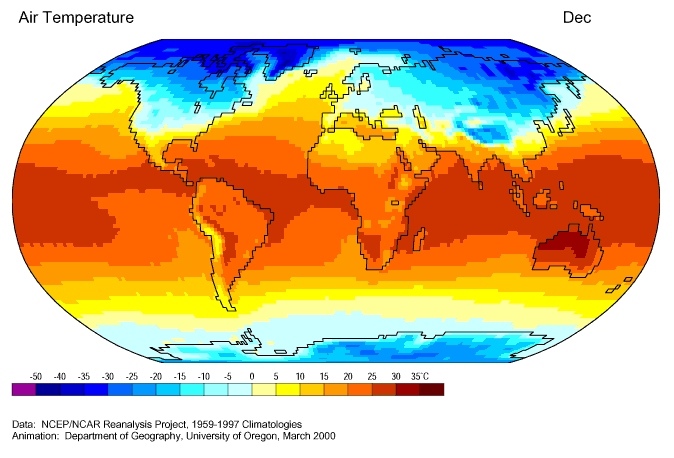Heat and Temperature
Lake Effect Snows are observed during the winter, typically during November to January. Remember that land heats and cools faster than bodies of water. In late fall and early winter, bodies of water are still warm from the summer months. The difference in temperature between the water and the air can be as much as 25˚C (45˚F). With this large difference comes a high potential for lake effect snow. In late winter, the frequency and intensity of lake effect snow taper off as the temperature difference diminishes because the water cools.

Animation shows how the temperatures change over land versus over the oceans over the course of a year. Notice how the temperatures changes quicker over the continents and how little they change over the open ocean. Source: NCEP/NCAR Reanalysis Project | University of Oregon